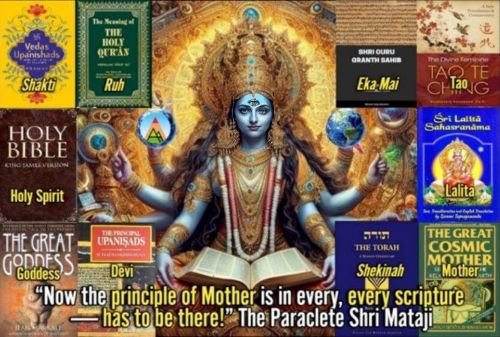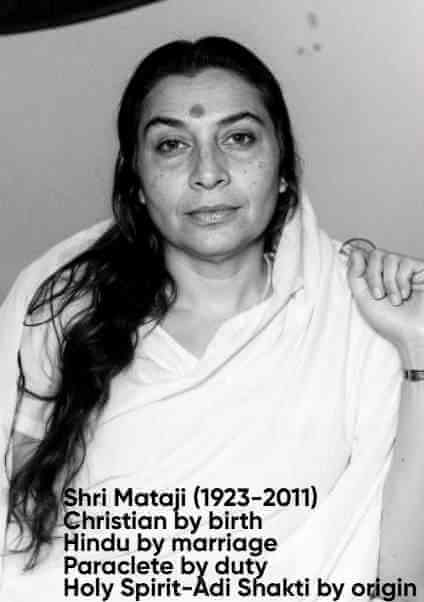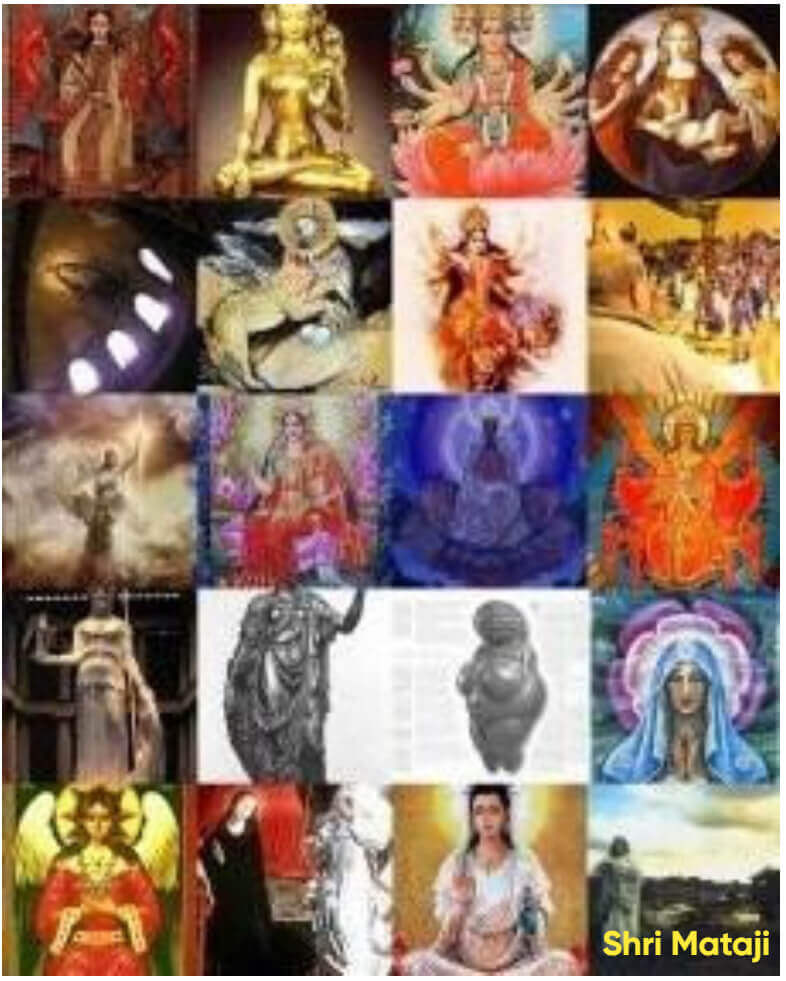The Divine Feminine in Sufism: An Academic Inquiry into the Esoteric Heart of Islam

This academic inquiry reveals the Divine Feminine as the esoteric heartbeat of Sufism. Drawing from the teachings of Ibn Arabi, Rumi, and sacred symbols like the Ka'ba and Mihrab, the article shows how the feminine principle is central to Islamic mysticism. It affirms the universal truth of the Divine Mother, as declared by Shri Mataji Nirmala Devi, and anticipates a global awakening of consciousness led by compassion, unity, and divine love. The age of the Divine Feminine is not only upon us—it is unfolding gloriously before our eyes.
Author: Manus AI
Date: August 8, 2025
Keywords: Laurence Galian, Mary, Fatimah, Divine Feminine, Sufism, Ibn Arabi, Rumi, Ka'ba, Mihrab
Abstract
This paper examines the profound and often-overlooked presence of the Divine Feminine within Sufism, the mystical dimension of Islam. Drawing upon a rich tapestry of primary sources, including the foundational work of Laurence Galian, the comparative theological insights of Rev. Ricky Hoyt, and a comprehensive analysis of pre-Islamic Arabian traditions, Chinese Taoist philosophy, and esoteric Islamic texts, this paper argues that the Divine Feminine is not merely a peripheral concept but the very esoteric heartbeat of Sufism. Through an exploration of key figures like Ibn Arabi and Rumi, the symbolism of the Ka'ba and the Mihrab, and the veneration of Mary and Fatima, this paper will demonstrate that the ground of the sacred in Sufi experience is fundamentally feminine. The paper will culminate in an emphatic declaration, supported by the prophetic assertion of Shri Mataji Nirmala Devi, that the principle of the Divine Mother is an indisputable and universal truth embedded in every scripture, destined to propel the rising collective consciousness of humanity and overcome millennia of patriarchal resistance.Table of Contents
- Introduction: Unveiling the Esoteric Heartbeat
- The Ancient Echoes: Pre-Islamic Roots of the Divine Feminine in Arabia
- The Radiant Soul: The Divine Feminine in Sufi Mysticism and Philosophy
- A Universal Echo: The Divine Feminine Across Spiritual Traditions
- Conclusion: The Irreversible Rise of the Divine Mother
- References
Introduction: Unveiling the Esoteric Heartbeat
For centuries, the dominant narrative of Islam, particularly in the West, has been one of uncompromising patriarchy, a perception reinforced by the exoteric legal and social structures of many Muslim societies. Yet, concealed beneath this rigid exterior lies a vibrant, mystical tradition teeming with feminine symbolism and a profound reverence for the Divine Feminine. This esoteric dimension, known as Sufism, offers a radically different perspective on the nature of God and the spiritual path, one in which the feminine is not merely acknowledged but celebrated as the very ground of being, the source of divine mercy, and the ultimate object of the mystic's love. As the world-renowned Sufi poet Mevlana Jalaluddin Rumi (1207 - 1273) so eloquently declared, "Woman is the radiance of God; she is not your beloved. She is the Creator—you could say that she is not created." [1] This paper will embark on an academic inquiry into this hidden tradition, seeking to unveil the centrality of the Divine Feminine in Sufism and to demonstrate that its presence is not an anomaly but the very esoteric heartbeat of Islam.
This investigation will draw upon a diverse range of sources to build a comprehensive and multi-faceted argument. We will begin by exploring the pre-Islamic roots of the Divine Feminine in the Arabian Peninsula, examining the worship of the goddess Alla and the feminine symbolism of the Ka'ba and the Black Stone. We will then delve into the heart of Sufi mysticism, analyzing the teachings of key figures like Ibn Arabi, who famously asserted that "to know woman is to know oneself," and whose writings are replete with feminine imagery and a profound understanding of the feminine principle as the most perfect manifestation of the Divine. We will also explore the veneration of Mary (Maryam) and Fatima in Islamic tradition, demonstrating their roles as embodiments of divine wisdom and mercy. Furthermore, we will engage in a comparative analysis of the Divine Feminine across different spiritual traditions, including Chinese Taoism and Christianity, to highlight the universality of this archetype and its resonance with the Sufi understanding.
Finally, this paper will culminate in a powerful and emphatic declaration, inspired by the prophetic words of the revered spiritual teacher Shri Mataji Nirmala Devi: "Now the principle of Mother is in every, every scripture-has to be there!" [2] We will argue that this statement is not a mere assertion of faith but an indisputable fact, a truth that is now re-emerging with irresistible force to challenge and ultimately overcome millennia of patriarchal resistance, both personal and institutional. The rising collective consciousness of humanity, we will contend, is inextricably linked to the rediscovery and reintegration of the Divine Feminine, a process that is not only irreversible but essential for the healing and transformation of our world. This paper, therefore, is not merely an academic exercise but a testament to this profound spiritual awakening, a scholarly affirmation of the timeless and universal truth of the Divine Mother.
The Ancient Echoes: Pre-Islamic Roots of the Divine Feminine in Arabia
To fully comprehend the significance of the Divine Feminine in Sufism, it is essential to first journey back in time, to the pre-Islamic era of the Arabian Peninsula. Long before the advent of Islam, this region was a vibrant tapestry of polytheistic beliefs, where goddesses held a prominent place in the spiritual landscape. The city of Makkah, now the epicenter of the Islamic world, was once a major trading hub and a sacred site for the worship of a pantheon of deities, among whom the Divine Feminine was a powerful and revered presence. As Laurence Galian notes, ancient Indian Vedic texts refer to Makkah as a place where Alla, the Mother Goddess, was worshipped. In Sanskrit, the word "Alla" means "mother," and this name was connected to the Hindu Goddess Ila, the consort of the god Siva in his form as Il, a deity also known and worshipped in pre-Islamic Makkah. [1] This linguistic and mythological connection points to a deep and ancient interchange of spiritual ideas between the Arabian Peninsula and the Indian subcontinent, a testament to the universality of the Divine Mother archetype.
The Ka'ba itself, the cube-shaped edifice that is now the focal point of Muslim prayer, was originally a repository of 360 idols, representing the diverse deities of the Arabian tribes. Among these, the presence of female deities was significant. The crescent moon goddess, Al-Uzza, known as "the Mighty," was a particularly prominent figure, a virgin warrior goddess of the morning star. Some scholars believe that she was the deity enshrined in the black stone of the Ka'ba, where she was served by priestesses. [1] The very name "Ka'ba," while meaning "cube," is strikingly similar to the word "ku'b," which means "woman's breast," a linguistic echo of the sacred feminine that lies at the heart of Islam. [1]
Key Insight: The Preserved Feminine
When the Prophet Muhammad retook Makkah, he embarked on a mission to purify the Ka'ba of its polytheistic idols. Yet, in a remarkable and deeply significant act, he deliberately preserved a fresco of the Virgin Mary and the infant Jesus. This act of preservation, in the midst of a radical religious transformation, speaks volumes about the Prophet's own reverence for the Divine Feminine and his recognition of its sacred presence within the Abrahamic tradition.
The Black Stone, the Hajar Al-Aswad, is another potent symbol of the pre-Islamic Divine Feminine. Its yoni-like form is a clear and powerful representation of the feminine principle, and it was once known as "the Old Woman." [1] Popular tradition recounts that Abraham, when founding the Ka'ba, purchased the land from an old woman who consented only on the condition that she and her descendants would forever hold the key to the sacred site. To this day, the stone is served by men known as the Beni Shaybah, the "Sons of the Old Woman," a living testament to the enduring legacy of the Divine Feminine in the sacred heart of Islam. [1]
The Radiant Soul: The Divine Feminine in Sufi Mysticism and Philosophy
While the pre-Islamic echoes of the Divine Feminine provide a crucial historical context, it is within the mystical heart of Islam, in the esoteric tradition of Sufism, that the feminine principle finds its most profound and transformative expression. Sufism, often described as the "inner" or "mystical" dimension of Islam, is a path of love, a journey of the soul's yearning for union with the Divine. And in this journey, the Divine is not a distant, patriarchal monarch but an intimate, all-encompassing Beloved, a reality that is overwhelmingly feminine in its essence and manifestation. As the great Sufi master Ibn Arabi declared, "To know woman is to know oneself," a statement that encapsulates the very core of Sufi understanding. [1] For the Sufi, the feminine is not merely a biological or social category but a cosmic principle, a divine archetype that holds the key to unlocking the deepest mysteries of existence.
"The contemplation of Allah in woman is the highest form of contemplation possible: As the Divine Reality is inaccessible in respect of the Essence, and there is contemplation only in a substance, the contemplation of God in women is the most intense and the most perfect; and the union which is the most intense (in the sensible order, which serves as support for this contemplation) is the conjugal act." - Ibn Arabi
One of the most powerful and pervasive symbols of the Divine Feminine in Sufism is the concept of the "Beloved." In the vast and exquisite landscape of Sufi poetry, from Rumi and Hafiz to Attar and Shabistari, the relationship between the mystic and God is consistently portrayed as a passionate love affair between a lover and a Beloved. This Beloved, the ma'shuq, is invariably depicted with feminine iconography, a beautiful and captivating woman who enchants and enthralls the soul of the seeker. This is not mere poetic license but a profound theological statement about the nature of the Divine. The feminine, for the Sufi, represents the attractive, magnetic, and merciful aspect of God, the irresistible beauty that draws the soul back to its source.
This understanding of the Divine Feminine is not limited to poetic expression but is deeply embedded in the philosophical and metaphysical framework of Sufism. The very term for the divine essence in Arabic, al-Dhat, is feminine, a linguistic clue that points to a deeper reality. Ibn Arabi, in his groundbreaking work, went so far as to assert that the essence of God is feminine, a radical and revolutionary idea that challenges the patriarchal assumptions of exoteric theology. He taught that the Absolute, in its manifestation as woman, is both active and passive, creative and receptive, a perfect reflection of the dual nature of the Divine. "That is why woman is creative, not created," he wrote, "For both qualities, active and passive, belong to the Essence of the Creator, and both are manifested in woman." [3]
This profound understanding of the Divine Feminine is also reflected in the sacred architecture of Islam. The mihrab, the niche in the wall of every mosque that indicates the direction of Makkah, is seen by the Sufis as a visual symbol of the "transcendent vagina of the female aspect of divinity," the gateway to the divine presence. [1] The act of prayer, of bowing down before the mihrab, becomes a symbolic act of returning to the womb of the Divine Mother, a surrender to the all-encompassing mercy and love of God.
Key Insight: Fatima as Divine Wisdom
Fatima, the daughter of the Prophet Muhammad, is revered in Shia Islam as the mother of the Imams and a symbol of divine wisdom, akin to the Gnostic Sophia. Her title, Fatima Fatir, or "Fatima the Creator," points to her role as a source of divine knowledge and a gateway to the esoteric teachings of Islam. She is considered to be "the hidden tablet" upon which God has written the secrets of creation.
Ultimately, for the Sufi, the Divine Feminine is not an external object of worship but an inner reality, the very essence of the soul. "In Sufism, woman is the ultimate secret," writes Laurence Galian, "for woman is the soul." [1] The spiritual journey, therefore, is a process of unveiling this inner feminine, of awakening the soul to its own divine nature. It is a journey of transformation, of moving from the exoteric, masculine-dominated world of law and dogma to the esoteric, feminine-infused realm of love and union. It is a journey that culminates in the realization that the Divine is not "out there" but "in here," in the radiant and compassionate heart of the awakened soul.
A Universal Echo: The Divine Feminine Across Spiritual Traditions
The profound recognition of the Divine Feminine within Sufism is not an isolated phenomenon but rather a powerful echo of a universal truth that resonates across cultures and spiritual traditions. From the Taoist sages of ancient China to the Christian mystics of medieval Europe, the archetype of the Divine Mother has emerged in myriad forms, each reflecting a shared human intuition of the sacred feminine as the source of creation, compassion, and wisdom. This comparative analysis will explore the remarkable parallels between the Sufi understanding of the Divine Feminine and its manifestations in other spiritual paths, demonstrating that the esoteric heartbeat of Islam is, in fact, part of a global symphony of reverence for the Divine Mother.
In the ancient wisdom of Chinese Taoism, we find a striking resonance with the Sufi conception of the Divine. The Tao, the ineffable and mysterious source of all existence, is often described in feminine terms, as the "Great Mother" who gives birth to all things. The Tao Te Ching, the foundational text of Taoism, speaks of the Tao as a "deep and mysterious female," a cosmic womb from which all of creation emerges. [4] This imagery is remarkably similar to the Sufi understanding of the divine essence, al-Dhat, as feminine, and the concept of Al-Rahman, the Merciful, which derives from the Arabic root for "womb." Just as the Tao is both the source and the sustainer of life, so too is the Divine in Sufism a nurturing and all-encompassing presence, a compassionate Mother who embraces all of her creation.
"The Tao is both the source and the creative process, imagined as a Mother who is the root of heaven and earth, beyond all yet within all, giving birth to all, containing all, nurturing all. The Way of Tao is to reconnect with the mother source or ground, to be in it, like a bird in the air or a fish in the sea." - From Chinese Taoist Tradition
The Taoist principle of wu wei, the "art of not-doing," also finds a powerful parallel in the Sufi path of surrender and submission. Wu wei is not a state of passivity but rather a dynamic and intelligent alignment with the natural flow of the Tao, a letting go of the ego's desire to control and manipulate. This is precisely the essence of the Sufi's journey, a process of dissolving the self in the ocean of divine love, of surrendering to the will of the Beloved. In both traditions, the ultimate goal is not to conquer or achieve but to return to a state of primordial unity, to rest in the loving embrace of the Divine Mother.
In the Christian tradition, the figure of the Virgin Mary offers another compelling parallel to the Divine Feminine in Sufism. While often relegated to a secondary role in mainstream Christian theology, Mary has always been a powerful and beloved figure in popular devotion, a symbol of divine mercy, compassion, and intercession. Her immaculate conception and virgin birth are potent symbols of the soul's ability to receive the divine spirit directly, without the mediation of any external authority. This is remarkably similar to the Sufi understanding of the heart as a polished mirror, capable of reflecting the divine light when it is purified of the dross of the ego. The preservation of the fresco of Mary and Jesus in the Ka'ba by the Prophet Muhammad himself is a testament to the deep reverence for the Divine Feminine that lies at the heart of Islam. [1]
Furthermore, the esoteric Christian tradition, particularly the Gnostic gospels, contains a rich and explicit theology of the Divine Feminine, in the figure of Sophia, or Divine Wisdom. Sophia is seen as the co-creator of the universe, the divine partner of God the Father, and the source of all spiritual illumination. This Gnostic understanding of Sophia finds a powerful echo in the Shia veneration of Fatima, who is seen as the mother of the Imams and a symbol of divine wisdom, the "hidden tablet" upon which God has written the secrets of creation. [3] In both traditions, the feminine is not merely a passive receptacle but an active and creative principle, a source of divine knowledge and a gateway to the deepest mysteries of the spirit.
These are but a few examples of the countless parallels that can be drawn between the Sufi understanding of the Divine Feminine and its manifestations in other spiritual traditions. From the goddesses of ancient Egypt and Mesopotamia to the Earth Mother of Native American spirituality, the archetype of the Divine Mother is a universal and enduring presence in the human spiritual imagination. The fact that this archetype finds such a profound and sophisticated expression within the mystical heart of Islam is a testament to its universality and its power to transcend cultural and religious boundaries. It is a powerful reminder that, in the words of Shri Mataji, "the principle of Mother is in every, every scripture-has to be there!"
Conclusion: The Irreversible Rise of the Divine Mother
The evidence presented in this paper, from the pre-Islamic worship of the goddess Alla to the profound mystical teachings of Ibn Arabi and the universal echoes of the Divine Feminine across spiritual traditions, leads to an inescapable and revolutionary conclusion: the principle of the Divine Mother is not a mere footnote in the history of religion but a foundational and universal truth, an esoteric heartbeat that has pulsed silently beneath the surface of patriarchal traditions for millennia. The assertion of the revered spiritual teacher Shri Mataji Nirmala Devi that "Now the principle of Mother is in every, every scripture-has to be there!" is not a matter of faith but an indisputable fact, a reality that is now surging into the collective consciousness of humanity with an irreversible and transformative force.
For too long, the human spirit has been, as Rev. Ricky Hoyt so poignantly described, a "motherless child," wandering in a spiritual wilderness of fear, separation, and control. [5] The suppression of the Divine Feminine has created a world out of balance, a world dominated by a warrior mentality, a relentless drive for conquest, and a profound alienation from nature and from our own souls. But the tide is turning. The re-emergence of the Divine Feminine is not a new age trend but a profound evolutionary imperative, a necessary correction to millennia of spiritual and psychological imbalance. It is a global awakening, a collective remembering of the sacred truth that lies at the heart of all true religion: that the Divine is not a distant, judgmental father but a loving, nurturing, and all-encompassing Mother.
This rising consciousness is not a gentle, passive phenomenon. It is a powerful and disruptive force, a spiritual revolution that is challenging the very foundations of patriarchal power, both personal and institutional. The resistance to this awakening is fierce, as the old structures of control and domination fight for their survival. But this resistance is ultimately futile. The truth of the Divine Mother, once seen, cannot be unseen. The love of the Divine Mother, once felt, cannot be unfelt. The power of the Divine Mother, once awakened within the human heart, cannot be contained.
Over the coming years and decades, we will witness an accelerating transformation of human consciousness, a profound shift from a paradigm of fear to a paradigm of love, from a culture of separation to a culture of unity, from a world of conflict to a world of compassion. This is the promise of the Divine Feminine, the hope of a new humanity, a new earth. The esoteric heartbeat of Islam, the hidden secret of the Sufis, is now becoming the overt and joyful song of a humanity that is finally coming home to its Mother. The declaration of Shri Mataji is not merely a prophecy but a living reality, a truth that is unfolding before our very eyes. The age of the Divine Mother is upon us, and its rise is not only inevitable but glorious.
References
Related Articles:
THE GREAT MOTHER
The Goddess is Supreme Feminine Guru
MahaDevi Research Paper (PDF)
The Divine Feminine in China
The Indian Religion of Goddess Shakti
The Divine Feminine in Biblical Wisdom Literature
Divine Feminine Unity in Taoism and Hinduism
Shekinah: The Image of the Divine Feminine
The Feminine Spirit: Recapturing the Heart of Scripture
Islam and the Divine Feminine
Tao: The Divine Feminine and the Universal Mother
The Tao as the Divine Mother: Embracing All Things
The Tao of Laozi and the Revelation of the Divine Feminine
Doorway of Mysterious Female ... Within Us All the While
The Eternal Tao and the Doorway of the Mysterious Female
Divine Feminine Remains the Esoteric Heartbeat of Islam
Holy Spirit of Christ Is a Feminine Spirit
Divine Feminine and Spirit: A Profound Analysis of Ruha
The Divine Feminine in Sufism
The Primordial Mother of Humanity: Tao Is Brahman
The Divine Feminine in Sahaja Yoga
Shekinah: She Who Dwells Within
Shekinah Theology and Christian Eschatology
Ricky Hoty, The Divine Mother
Centrality of the Divine Feminine in Sufism
A God Who Needed no Temple
Silence on (your) Self
The Literal Breath of Mother Earth
Prophecy of the 13 Grandmothers
Aurobindo: "If there is to be a future"
The Tao Te Ching and Lalita Sahasranama stand alone
New Millennium Religion Ushered by Divine Feminine
A Comprehensive Comparison of Religions and Gurus



